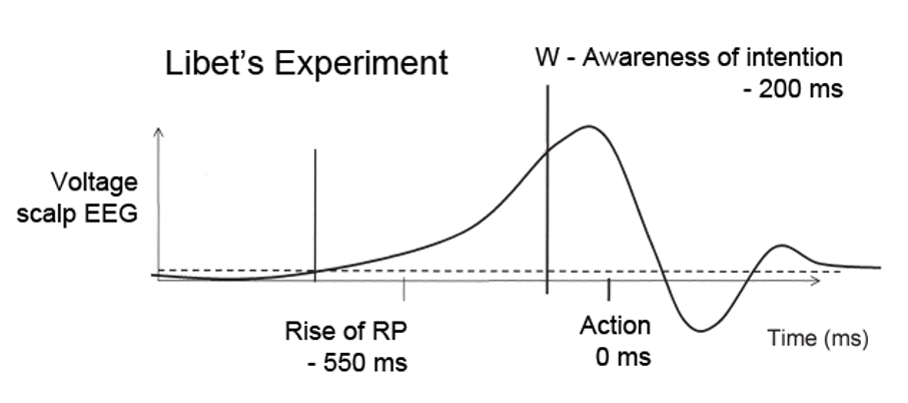I am delighted to announce the second in our series of symposia on articles from Neuroscience of Consciousness. We have two types of symposia. For primarily theoretical articles, such as in last week’s post, we will have several commentators from a variety of theoretical perspectives. For novel empirical research, we will have single commentators whose goal is to bring out the theoretical challenges and import of the results. Our first symposium of this second type is on a fascinating article from Isham, Wulf, Mejia, and Krisst, and we have an excellent commentary from Joshua Shepherd, along with a response from the authors.
***
In Libet’s pioneering studies, subjects were asked to perform a simple wrist-flexion task. In addition, they were also asked to watch an analog clock-face and, retrospectively, indicate the time on the clock when they first felt the conscious “urge” to perform the movement. EEG recordings taken during the task showed that the “action-readiness” potential—a distinctive waveform which precedes voluntary motor action—occurred prior to the time that subjects reported their conscious will to perform the action.
Libet’s results are often reported as showing that conscious will is epiphenomenal—that it plays no causal role in decision and action. But this was not in fact Libet’s preferred interpretation. He argued that while consciousness does not play a causal role in initiating an action, it may play a role after the action is initiated. That is, conscious will might allow us to cancel, or “veto,” an action that has been generated by subconscious processes.
An important methodological concern with Libet’s studies is that the wrist flexion task is an extremely simple one, requiring little thought or deliberation, and hence is not a paradigm case of conscious choice. Isham, Wulf, Mejia, and Krist take up both this methodological concern and the question of the veto window in their paper. Their method is to vary the difficulty of the decision that precedes a motor task. They measure two time variables: the time from presentation of the statement to the moment of decision (‘W’), and the time between W and when the subjects began their motor response (‘MR’).
Isham et al.’s results center around one finding that is, initially, hard to square with Libet’s veto hypothesis. They note that, if one deliberates after one’s decision has already (subconsciously) reached, as Libet suggests, and if harder decisions involve more deliberation, then the time between the decision W and the response MR should be longer in harder decisions. What they find, however, is in fact the exact opposite—the W-MR window is in fact significantly longer in easier than in harder decisions.
Does this disprove Libet’s veto theory? Not quite. Drawing on dual-systems views of reasoning, Isham et al. suggest that very simple decisions are likely to be undertaken by largely unconscious processes. In this case, we might in fact require longer deliberation windows after the decision to consider, and possibly veto, the action. For difficult tasks, conscious deliberation is likely to occur prior to the decision, leaving little to reconsider afterwards. Indeed the time from stimulus presentation to W is considerably longer for hard questions, in addition to the shorter W-MR window.
Isham et al.’s first attempt at verifying this hypothesis, by having subjects press a button during the W-MR window when new, task-relevant thoughts occur to them, is inconclusive—while subjects press the button slightly more in easy tasks, the results are not statistically significant. Moreover, there are alternative hypotheses for the difference in W-MR window that do not accord with the dual-systems based hypothesis. It may be, for instance, that the complexity of the task or an increased sense of agency in harder decisions modifies how subjects report their experience of conscious decision. Much remains to be investigated, but in addressing one of the major methological concerns of Libet’s studies, Isham et al.’s paper opens up a range of interesting interpretations and further questions.
***
Thanks very much to our contributors for participating. Thanks also to Jakob Hohwy and the other editors of Neuroscience of Consciousness, and to Oxford University Press. Please feel free to comment in the discussion board below!
Joshua Shepherd, Comments on Isham et al.
Eve A. Isham, Response to Shepherd

